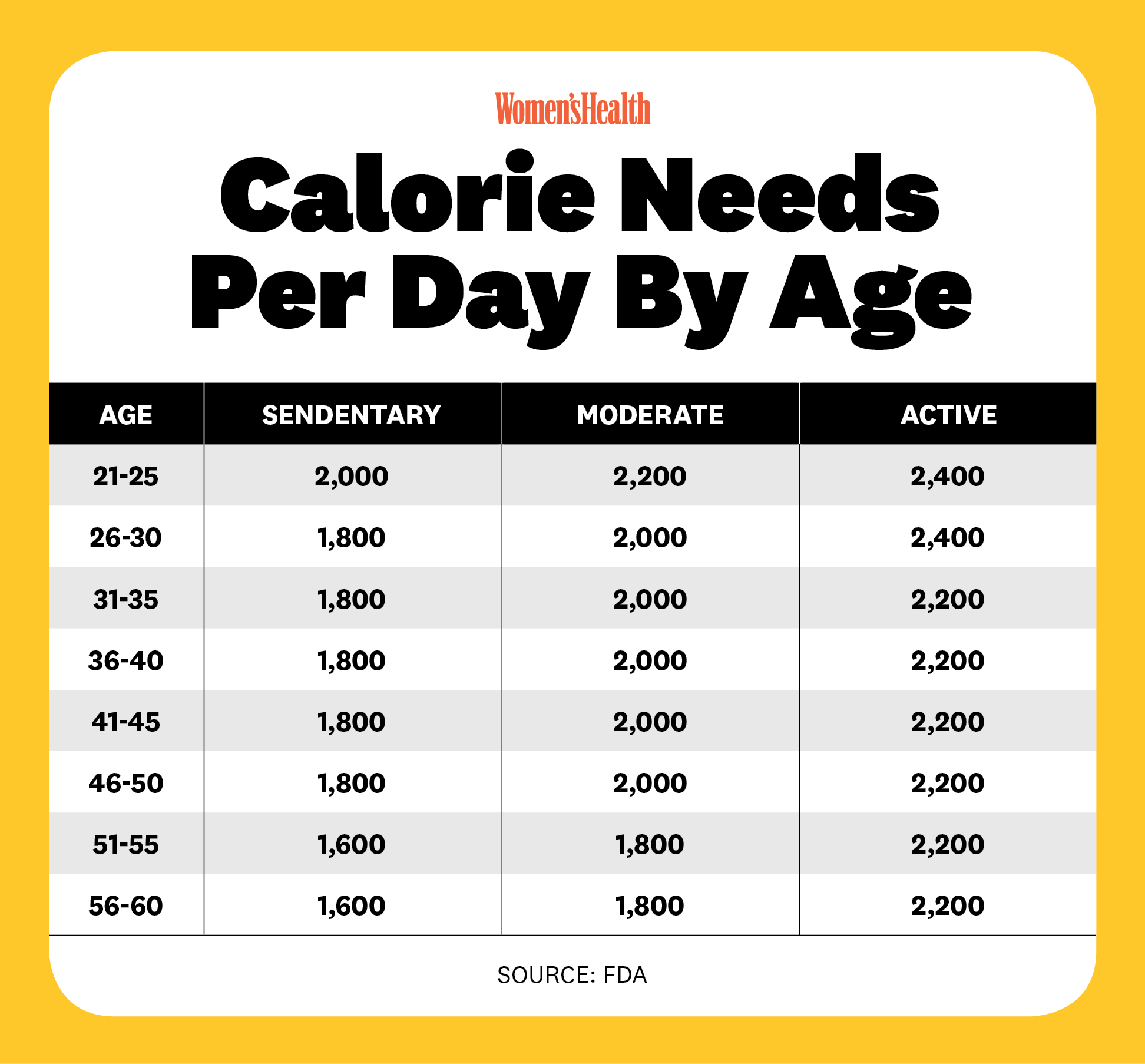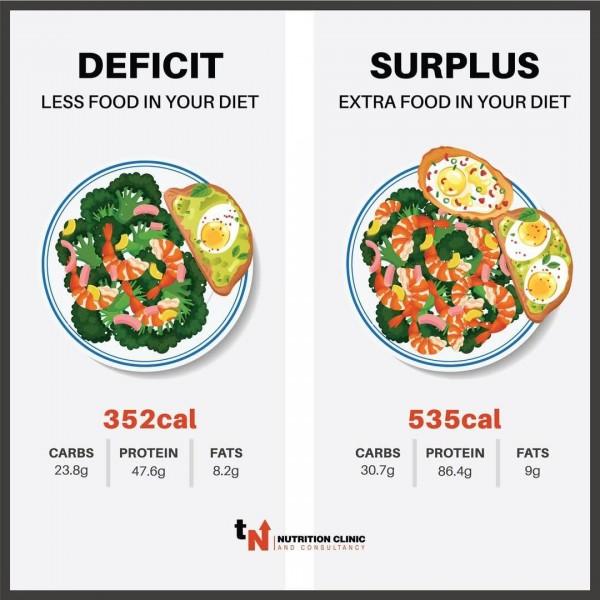To be in a calorie deficit, you need to consume fewer calories than your body burns. This promotes weight loss by encouraging your body to use stored fat for energy.
But how many calories should you eat to achieve this? Figuring out the right number of calories for a calorie deficit can be confusing. It’s different for everyone, based on factors like age, gender, activity level, and metabolism. Understanding how to calculate your calorie needs can help you reach your weight loss goals safely and effectively.
This blog will guide you through the process, helping you find the right balance for a healthy calorie deficit. By the end, you will know how to tailor your calorie intake to your unique needs. Let’s dive in!
Calorie Deficit Basics
Eating fewer calories than your body needs leads to weight loss. Calculate your daily calorie needs, then subtract 500-1000 calories for a safe deficit. This approach helps you lose about 1-2 pounds per week.
What Is A Calorie Deficit?
A calorie deficit means eating fewer calories than your body needs. It helps in weight loss. Your body uses stored fat for energy. This happens when you consume less food. The goal is to burn more calories than you eat.
Why Calorie Deficit Matters
Creating a calorie deficit is key for losing weight. It helps you shed extra pounds. This approach promotes healthier eating. It encourages more physical activity. Your body will use fat for energy. This leads to weight loss over time. Many people use this method for better health. It’s a proven way to lose weight safely.
Determining Your Caloric Needs
Your Basal Metabolic Rate (BMR) is the number of calories you burn at rest. It is the energy your body needs to keep basic functions going. Breathing, heartbeats, and body temperature regulation. To find your BMR, you can use a simple formula. Men and women have different formulas. For men: BMR = 10 x weight(kg) + 6.25 x height(cm) – 5 x age + 5. For women: BMR = 10 x weight(kg) + 6.25 x height(cm) – 5 x age – 161.
Your Total Daily Energy Expenditure (TDEE) includes your BMR and activity level. TDEE is the total number of calories you burn in a day. To find your TDEE, multiply your BMR by an activity factor. Sedentary (little exercise): BMR x 1.2. Light activity (light exercise/sports 1-3 days/week): BMR x 1.375. Moderate activity (moderate exercise/sports 3-5 days/week): BMR x 1.55. Very active (hard exercise/sports 6-7 days a week): BMR x 1.725. Super active (very hard exercise & physical job): BMR x 1.9.
Setting Calorie Deficit Goals
A safe calorie deficit helps with weight loss. It keeps you healthy. Experts say to aim for 500 to 1,000 calories less each day. This helps you lose about 1 to 2 pounds per week. It’s important to not go below 1,200 calories for women and 1,500 for men. Going too low can slow your metabolism. It also makes you feel tired and weak.
Short-term goals are useful for quick results. But they can be hard to keep up. Long-term goals are better for lasting changes. They are easier to follow. You can set small goals that add up over time. This helps to stay motivated. Always listen to your body. Adjust your calories as needed. This makes your journey healthier.

Credit: www.instagram.com
Calculating Your Calorie Intake
To be in a calorie deficit, calculate your daily calorie needs and consume fewer calories than your body uses. This helps in weight loss by ensuring you burn more calories than you eat. A simple formula or online calculator can assist in determining your ideal intake.
Using Online Calculators
Online calculators can help find your calorie needs. They use your age, weight, height, and activity level. Enter your details, and you get a number. That number is your maintenance calories. To lose weight, eat less than this number. This is your calorie deficit.
Manual Calculation Methods
You can also calculate calories manually. First, find your Basal Metabolic Rate (BMR). Use this formula: For men: 88.362 + (13.397 x weight in kg) + (4.799 x height in cm) – (5.677 x age). For women: 447.593 + (9.247 x weight in kg) + (3.098 x height in cm) – (4.330 x age). Multiply BMR by your activity level. This gives your maintenance calories. To create a deficit, eat fewer calories than this number.
Adjusting Calorie Intake
Tracking your progress is important. Use a food journal or app. Write down everything you eat. Check your weight weekly. Look at how your clothes fit. These signs will tell you if you are on track. If you lose weight, keep doing what works. If not, it’s time to adjust.
Small changes can help. Reduce your calories by 100-200 per day. Try eating smaller portions. Choose low-calorie foods. Drink more water. Stay active. Exercise can boost your results. Aim for at least 30 minutes a day. Walking, jogging, or cycling can help. Listen to your body. Adjust as needed.

Credit: www.womenshealthmag.com
Balancing Nutrition And Deficit
Eating fewer calories is key. But your body needs nutrients. Protein, carbs, and fats are important. They help you stay strong and healthy. Vitamins and minerals are also needed. You can get them from fruits and vegetables. Whole grains give you energy.
Missing nutrients can hurt you. Iron helps your blood. Calcium keeps bones strong. Vitamin D boosts your immune system. A balanced diet prevents deficiencies. Choose a variety of foods. Lean meats, dairy, and nuts are good choices. Stay healthy while in a calorie deficit.
Common Mistakes To Avoid
Eating too few calories is a common mistake. It can slow down your metabolism. Your body might think it is starving. This can lead to muscle loss. It can also make you feel tired and irritable. A small deficit is safer. It helps you lose weight slowly and steadily. Aim to eat only 500 fewer calories per day.
Only focusing on diet can be a mistake. Exercise is important too. It helps you burn more calories. It also keeps your muscles strong. Cardio and strength training are both helpful. Try to exercise at least 30 minutes a day. This makes your calorie deficit more effective.

Credit: www.gmanetwork.com
Expert Tips For Success
Discover how to determine your daily calorie needs to achieve a calorie deficit. Calculate your Basal Metabolic Rate (BMR) and adjust your intake to shed pounds effectively. Simple changes can lead to weight loss success.
Staying Consistent
Consistency is key in a calorie deficit. Stick to your plan daily. Small steps matter. Track your food intake. Use a journal or app. Stay patient. Results take time. Celebrate small wins. They keep you motivated. Avoid drastic changes. Slow and steady wins.
Incorporating Healthy Habits
Choose nutrient-rich foods. They keep you full longer. Eat more fruits and vegetables. Drink plenty of water. It helps control hunger. Plan your meals ahead. Avoid last-minute choices. Get enough sleep. It affects your hunger hormones. Stay active. Exercise boosts your metabolism. Find activities you enjoy. It makes staying active easier.
Frequently Asked Questions
What Is A Calorie Deficit?
A calorie deficit occurs when you consume fewer calories than your body needs for maintenance. This forces the body to use stored fat for energy, leading to weight loss.
How Many Calories To Eat For Weight Loss?
To lose weight, aim for 500-1000 calories less than your daily maintenance needs. This generally leads to a safe weight loss of about 1-2 pounds per week.
How Do I Calculate My Calorie Needs?
Calculate your calorie needs using the Total Daily Energy Expenditure (TDEE) formula. Consider factors like age, gender, weight, height, and activity level.
Can I Lose Weight Without Counting Calories?
Yes, you can lose weight by focusing on portion control, eating whole foods, and increasing physical activity. However, counting calories can help achieve more precise results.
Conclusion
Finding your ideal calorie deficit takes time and patience. Start by calculating your daily needs. Subtract 500 calories for a safe deficit. Track your progress and adjust as needed. Listen to your body and stay hydrated. Consistency is key to achieving results.
Make healthy food choices to support your goals. Remember, small changes lead to big results. Stay positive and focused on your journey. Your health and well-being matter the most.